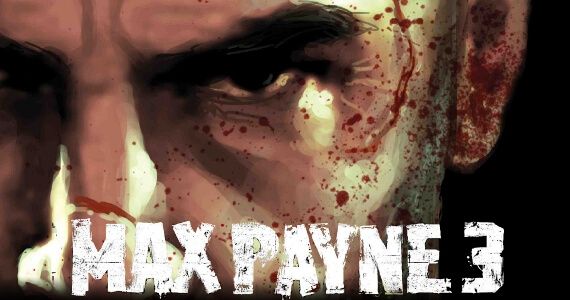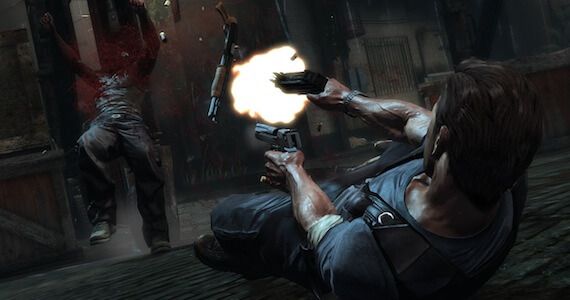The last time we saw Max Payne, he was being portrayed as Mark Wahlberg in what was a barely passable attempt of bringing the mental breakdown of the rogue cop to the big screen. His digital counterpart had not been seen since 2003, when he parted ways permanently with contract killer Mona Sax (or did he?). Luckily for us, Rockstar Games is bringing back the more popular incarnation of the gun-wielding detective in Max Payne 3.
The newest installment is not being developed by Remedy Entertainment or the game's original creator, Sam Lake. Instead, Rockstar Vancouver and Dan Houser take over the reigns of Max's further descent into darkness. However, not all ties to the past have been cut as James McCaffrey, the original voice of Max Payne, returns to voice-acting duty with the added responsibility of acting as the motion capture model for the titular character.
Upon launching into the game, fans of the series will notice that the film noir comic panels have been discarded for a more movie-like presentation. While this may be off-putting to some, it does provide a more modern feel, which we think is for the better. Other than this style change, everything else that fans love about the Max Payne series has returned in spectacular fashion.
The narrative begins with Max's invitation by an old friend to work for a private security company in São Paulo, Brazil. Of course, nothing is ever easy for the tortured ex-detective and he soon finds himself in the middle of a gang war. At PAX East, We were able to play a couple of the Brazil single-player levels where Max was attempting to rescue the kidnapped wife of his employer and quickly noticed how similar the gameplay was to the previous games in the series. These sequences mainly took place inside and outside of some warehouses located near the water.
Like previous Max Payne titles, the level progression was strictly linear and involved taking out all of the bad guys along a path from location A to location B. Rockstar has introduced a cover system into the gameplay, but this is clearly not a cover-based shooter. If anything, using cover is mainly there so that the player can ascertain his or her surroundings before launching into his attacks. Try to stay in cover for too long and the effective enemy AI will rush and flank Max so that he has little chance of survival.
Besides, who wants to sit behind cover when the option of slowing down time exists? Bullet time returns in a big way and still remains the heart of the Max Payne experience. The skill has now been tweaked to account for Max's momentum, so when he dives into an object, he will actually attempt to brace himself or take other actions in relation to his environment. Max will also stay prone on the ground after a dive or roll onto his side, depending on where he is aiming his weapon. When bullet time is engaged, Max appeared to have the ability to shoot in any direction no matter which way he initially may have dove, which can result in all sorts of over-the-top body contortions. While we were using a free aim system to guide Max's attacks during our playthrough, Rockstar's PR Manager, Nick Patterson, told us that Rockstar planned to also include a target locking system as well. Even with the free aim crosshair, we felt that the control scheme was simple and intuitive, making the barrier to entry and enjoyment very low.
Both Max and his enemies react to where they are shot, providing a more realistic feel to combat. However, we noticed that when the kill cam would show us eliminating the last enemy in an area, it would often show the enemy's face being blasted despite us shooting him in the knee or some other body part. Notwithstanding this minor gripe, this new effect made shooting for a particular body part that much more fun.
Unlike most other modern-day shooters, Max's health won't regenerate on its own. The only way to heal up is to locate painkillers that are scattered around the game area. Still, Max Payne 3 practically forces gamers to take crazy risks while dispatching enemies and careful use of bullet time will usually keep Max safe. Even if Max goes down, he'll still have a chance to recover through the “Last Man Standing” feature, which is similar to, but easier to use than, the “Second Wind” system from Borderlands: kill the enemy that last shot Max and he'll be able to re-enter the fray. The game helps the player locate this enemy by forcing the crosshairs to drift toward the culprit.
Ultimately, Max Payne 3's core gameplay was not much different than its predecessors. Even the story length is expected to be about the same as the original game. While the graphical update is significant and welcomed, the beauty of Max Payne is the ballet-like shootouts, which are more impressive looking in Max Payne 3 than ever before.
Speaking of bullet time, Max Payne 3 has a multiplayer mode that incorporates this tech, but unfortunately that was not playable at PAX East. But with the promise of this feature as well as gang wars and a direct tie-in to Grand Theft Auto V, multiplayer could extend the life of this linear stylized shooter by quite a bit.
In the end, there's enough similarity to the first two games, that Max Payne fans should be encouraged. Be sure to look for Game Rant's full review in the future.
Max Payne 3 releases for the Playstation 3 and Xbox 360 on May 15, 2012, and for the PC on May 29, 2012.


